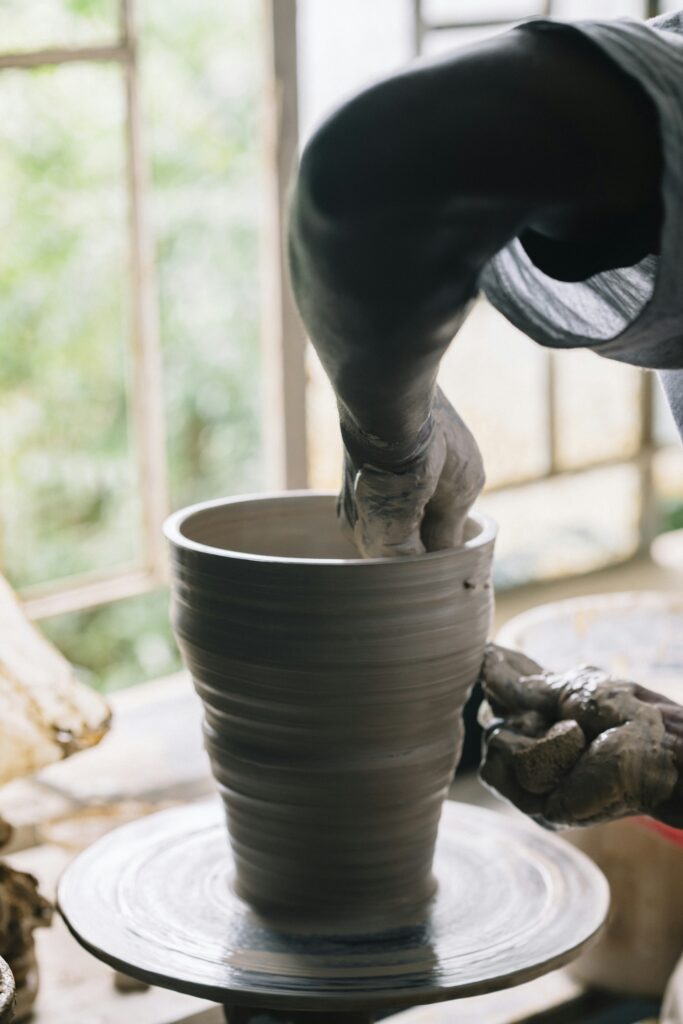Ready to take your regular recipes to the next level with your Instant Pot? If you’ve been wondering how to adapt your favorite dishes to this versatile kitchen appliance, we’ve got you covered. In this article, we’ll share some simple tips and tricks to help you effortlessly convert any regular recipe to an Instant Pot recipe. Say goodbye to long hours spent in the kitchen and hello to flavorful meals in a fraction of the time!
Understanding the Instant Pot
What is an Instant Pot?
The Instant Pot is a versatile kitchen appliance that has gained immense popularity in recent years. It combines the functions of a pressure cooker, slow cooker, rice cooker, steamer, and more, making it a valuable addition to any kitchen. It operates by using high-pressure steam to cook food quickly and efficiently, which not only saves time but also enhances the flavors of the dishes.
Why use an Instant Pot?
There are several compelling reasons to use an Instant Pot in your cooking routine. Firstly, it significantly reduces cooking time compared to traditional methods. The high-pressure cooking feature allows you to cook meals in a fraction of the time it would take on the stovetop or in the oven. Additionally, the Instant Pot is incredibly convenient, as it is a multi-functional appliance that eliminates the need for multiple cooking devices. It is also energy-saving since it consumes less power than conventional cooking methods. Lastly, the Instant Pot is known for producing tender and flavorful dishes due to its ability to retain moisture and enhance the natural flavors of the ingredients.
Benefits of using an Instant Pot
Using an Instant Pot offers numerous benefits that make it an invaluable tool in the kitchen. Its versatility allows you to prepare a wide range of dishes, from soups and stews to desserts and yogurt. The sealed cooking environment of the Instant Pot helps lock in the nutrients, resulting in healthier meals. It also frees up your hands and time, as the Instant Pot does not require constant monitoring or stirring. With its programmable features, you can set it and forget it until the meal is ready. The Instant Pot is also great for meal prep and batch cooking, as it can efficiently cook large quantities of food at once and allows for easy storage and reheating.
Converting Cooking Time
Understanding pressure cooking
Pressure cooking is a cooking method that uses steam pressure to cook food quickly. When using an Instant Pot, the sealed environment inside the pot raises the boiling point of liquids, which helps food cook faster. This process not only saves time but also retains the flavors and nutrients in the ingredients.
Adjusting cooking time for the Instant Pot
When converting a regular recipe to an Instant Pot recipe, it’s essential to adjust the cooking time accordingly. As a general rule of thumb, when pressure cooking, you can cut the cooking time by approximately 70-80% compared to traditional cooking methods. However, it’s crucial to keep in mind the specifics of each recipe, such as the type of ingredients and the desired texture.
Considering the natural release time
After pressure cooking, the Instant Pot offers different methods for releasing the pressure: natural release and quick release. Natural release allows the pressure to dissipate naturally, which is ideal for dishes that benefit from additional cooking time or recipes with delicate ingredients. Quick release, on the other hand, involves manually releasing the pressure using the release valve. It is suitable for recipes that require immediate pressure release or when you need to stop the cooking process quickly.

Adapting Ingredients
Choosing the right cuts of meat
The Instant Pot excels at tenderizing tough cuts of meat, making them incredibly succulent and flavorful. When adapting a recipe, it’s essential to choose the appropriate cuts of meat that will benefit from pressure cooking. Tough cuts such as chuck roast, brisket, and short ribs are excellent choices as they become incredibly tender and melt-in-your-mouth after being cooked under pressure.
Adjusting liquid proportions
One crucial factor to consider when adapting recipes for the Instant Pot is the liquid content. Since the Instant Pot requires liquid to generate steam, it’s essential to ensure that there is enough liquid in the recipe to reach the desired pressure. As a general guideline, it’s recommended to use at least one cup of liquid for most recipes. However, for thicker or creamier recipes, such as sauces or stews, you may need to use more liquid to avoid burn errors and ensure proper pressure.
Modifying seasoning and spices
When adapting recipes for the Instant Pot, it’s important to take into account the enhanced flavors that pressure cooking brings to the dish. The flavors tend to intensify during pressure cooking, so it’s advisable to reduce the amount of seasoning and spices used in the recipe. Start with a slightly smaller amount than the original recipe and adjust to taste accordingly. Remember that you can always add more seasoning after cooking if desired.
Altering Cooking Techniques
Sauteing in the Instant Pot
The Instant Pot comes equipped with a saute function, which allows you to saute and brown ingredients directly in the pot before pressure cooking. This feature eliminates the need for multiple pans and greatly streamlines the cooking process. To saute in the Instant Pot, simply select the saute function, add oil or butter, and cook your ingredients as you would in a regular skillet. This pre-cooking step adds depth of flavor to your dishes and creates a rich base for pressure cooking.
Browning and searing
For recipes that benefit from a crispy exterior or a caramelized crust, such as meats or vegetables, it’s important to brown or sear the ingredients before pressure cooking. By using the saute function on the Instant Pot, you can achieve that golden crust or sear that enhances the overall taste and appearance of the dish. Browning and searing also add complexity to the flavors, resulting in a more satisfying culinary experience.
Using the pot-in-pot method
The pot-in-pot method is a technique used in the Instant Pot that allows you to cook multiple dishes simultaneously. This method involves placing a smaller container or trivet inside the main Instant Pot’s cooking pot to cook another dish. It is particularly useful when you want to cook a side dish or dessert while the main course cooks under pressure. The pot-in-pot method expands the versatility of the Instant Pot and allows you to create complete meals in a single cooking session.

Modifying the Liquid Content
Understanding the importance of liquid
Liquid is a critical component in the Instant Pot as it plays a vital role in generating steam and building pressure. It is essential to have enough liquid in the recipe to avoid burn errors and ensure the Instant Pot reaches the required pressure. The liquid also contributes to the overall moisture and tenderness of the cooked dish.
Reducing or increasing liquid
When adapting a regular recipe to an Instant Pot recipe, you may need to adjust the amount of liquid used. As a general guideline, it’s advisable to reduce the liquid content slightly compared to traditional cooking methods. The sealed environment of the Instant Pot retains moisture more efficiently, so you won’t need as much liquid. However, certain recipes, such as soups or stews, may require more liquid due to the longer cooking time or desired consistency. It’s important to consider the specific requirements of each recipe and make adjustments accordingly.
Accounting for evaporation
During the cooking process in the Instant Pot, there may be some evaporation of liquid due to the high heat and pressure. It’s crucial to take this into account when adjusting the liquid content in the recipe. As a general rule, it’s recommended to slightly increase the amount of liquid to compensate for any potential evaporation. Keep an eye on the liquid level throughout the cooking process and make adjustments if necessary to ensure the dish doesn’t become too dry.
Adjusting the Recipe Size
Scaling up or down the ingredients
When adapting a recipe for the Instant Pot, it’s important to consider the pot’s capacity and the number of servings you want to make. If you’re scaling up the recipe, make sure the ingredients fit comfortably within the pot without exceeding its maximum fill line. On the other hand, if you’re scaling down the recipe, ensure there is enough liquid to reach the required pressure. Adjusting the recipe size allows you to cook meals in quantities that best suit your needs, whether it’s a single serving or a large family meal.
Considering the pot capacity
Different models of Instant Pot come with different pot capacities. It’s crucial to be aware of the capacity of your specific Instant Pot model when adapting recipes. Most Instant Pots have a capacity of 6 to 8 quarts, but smaller or larger sizes are also available. Ensure that the recipe measurements and quantities are appropriate for your pot’s capacity to avoid overfilling or underfilling.
Adapting cooking time and liquid for different recipe sizes
When adjusting the recipe size, it’s important to also consider the cooking time and the amount of liquid needed. As the size of the recipe changes, the cooking time may need to be adjusted accordingly. As a general guideline, decreasing the recipe size may slightly reduce the cooking time, while increasing the size may require a slightly longer cooking time. Similarly, the amount of liquid used may need to be tweaked when adjusting recipe size to ensure proper pressure and moisture levels. It’s crucial to refer to the Instant Pot’s manual and follow any specific guidelines provided for recipe size adjustments.

Using the Pre-set Functions
Exploring the pre-set functions of the Instant Pot
The Instant Pot comes equipped with pre-set functions that are designed to simplify the cooking process for various dishes. These functions include settings for cooking rice, making yogurt, sauteing, steaming, and more. By using the pre-set functions, you can take advantage of the Instant Pot’s intelligent programming and save time and effort in the kitchen. Each pre-set function has specific parameters, such as cooking time and pressure level, which are tailored for optimal results in different types of recipes.
Using manual settings for more control
While the pre-set functions offer convenience, using the manual settings on the Instant Pot allows you to have more control over the cooking process. The manual setting allows you to adjust the cooking time, pressure level, and temperature based on your specific recipe requirements. This flexibility is particularly useful for experienced cooks or for adapting recipes that fall outside the scope of the pre-set functions. Experimenting with the manual settings can open up a world of possibilities and allow you to customize your cooking experience.
Troubleshooting pre-set functions
In some cases, the pre-set functions may not produce the desired results, or they may not be suitable for certain recipes. If you encounter any issues with the pre-set functions, it’s important to troubleshoot and make adjustments as necessary. This may involve adjusting the cooking time, adding or reducing liquid, or using the manual settings instead. Each recipe and situation may require a different approach, so it’s essential to be flexible and willing to make changes to ensure the best outcome.
Understanding Pressure Release Methods
Natural release
Natural release is a pressure release method that allows the Instant Pot to naturally depressurize without any intervention. After the cooking time is complete, the Instant Pot will switch to the “keep warm” mode and start releasing pressure gradually. This process can take anywhere from a few minutes to over half an hour, depending on the recipe. Natural release is often recommended for recipes with delicate ingredients or dishes that require additional cooking time to enhance flavors and textures.
Quick release
Quick release is a pressure release method that involves manually releasing the pressure from the Instant Pot using the release valve. It is a quicker method compared to natural release and is ideal for recipes that need to stop cooking immediately or when you’re short on time. Quick release should be used with caution, especially for recipes with a high liquid content, as it can cause spewing or foaming from the valve. It’s important to follow the safety instructions and ensure you’re in a well-ventilated area when using the quick release method.
Combination release
Combination release, as the name suggests, is a combination of natural release and quick release. This method involves releasing the pressure manually for a short period of time before allowing the Instant Pot to depressurize naturally. Combination release is often used for recipes that require a shorter natural release time but still benefit from a brief period of quick release. It offers a good balance between convenience and ensuring the optimal texture and flavor of the dish.
Testing and Tweaking
Conducting trial runs
When venturing into the world of Instant Pot cooking, it’s always a good idea to conduct trial runs before preparing a meal for a special occasion or guests. Trial runs allow you to familiarize yourself with the Instant Pot’s functions and timings. It also provides an opportunity to test your adaptations or modifications to ensure they yield the desired results. By conducting trial runs, you can gain confidence in using the Instant Pot and fine-tune your cooking techniques.
Making adjustments based on results
After conducting a trial run or preparing a dish in the Instant Pot, it’s important to evaluate the results and make any necessary adjustments. Pay attention to the texture, flavor, and overall satisfaction of the dish. If certain aspects need improvement, such as the cooking time, seasoning, or amount of liquid, take note of those and make the appropriate changes for future recipes. The beauty of the Instant Pot is the ability to customize and refine your cooking methods based on personal preferences.
Taking notes for future reference
Throughout your Instant Pot cooking journey, it’s highly beneficial to keep a record of the recipes you’ve tried, the modifications you’ve made, and the results you’ve achieved. By taking notes and documenting your experiences, you create a valuable resource for future reference. These records can help you recreate successful dishes, troubleshoot any issues, and track your progress as you continue to explore new recipes and techniques with the Instant Pot.
Experimenting with Instant Pot Recipes
Trying out Instant Pot recipes
One of the joys of owning an Instant Pot is the abundance of recipes available for you to try. From classic comfort foods to international cuisines, there is a wide array of Instant Pot recipes that cater to various tastes and dietary preferences. Explore online platforms, cookbooks, and social media for inspiration and choose recipes that pique your interest. Trying out new recipes not only allows you to experience the full potential of the Instant Pot but also expands your culinary repertoire.
Taking inspiration from existing recipes
While it’s incredibly satisfying to follow recipes exactly as written, don’t be afraid to adapt and personalize them to your liking. Use existing recipes as a starting point and take inspiration from them to create your own unique dishes. Experiment with different seasonings, herbs, and vegetables to add your own flair to the recipes. The versatility and flexibility of the Instant Pot make it a perfect canvas for culinary creativity.
Creating your own Instant Pot recipes
Once you’ve gained confidence and proficiency in using the Instant Pot, you may feel inspired to create your own recipes. Developing your own Instant Pot recipes allows you to explore new flavor combinations, techniques, and cooking methods. Start by understanding the fundamental principles of pressure cooking and experiment with different ingredients and seasonings. Don’t be discouraged if a recipe doesn’t turn out as expected; it’s all part of the creative process. With time and practice, you’ll be surprised at the amazing dishes you can create with your own Instant Pot recipes.




